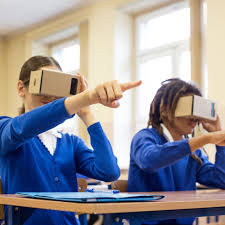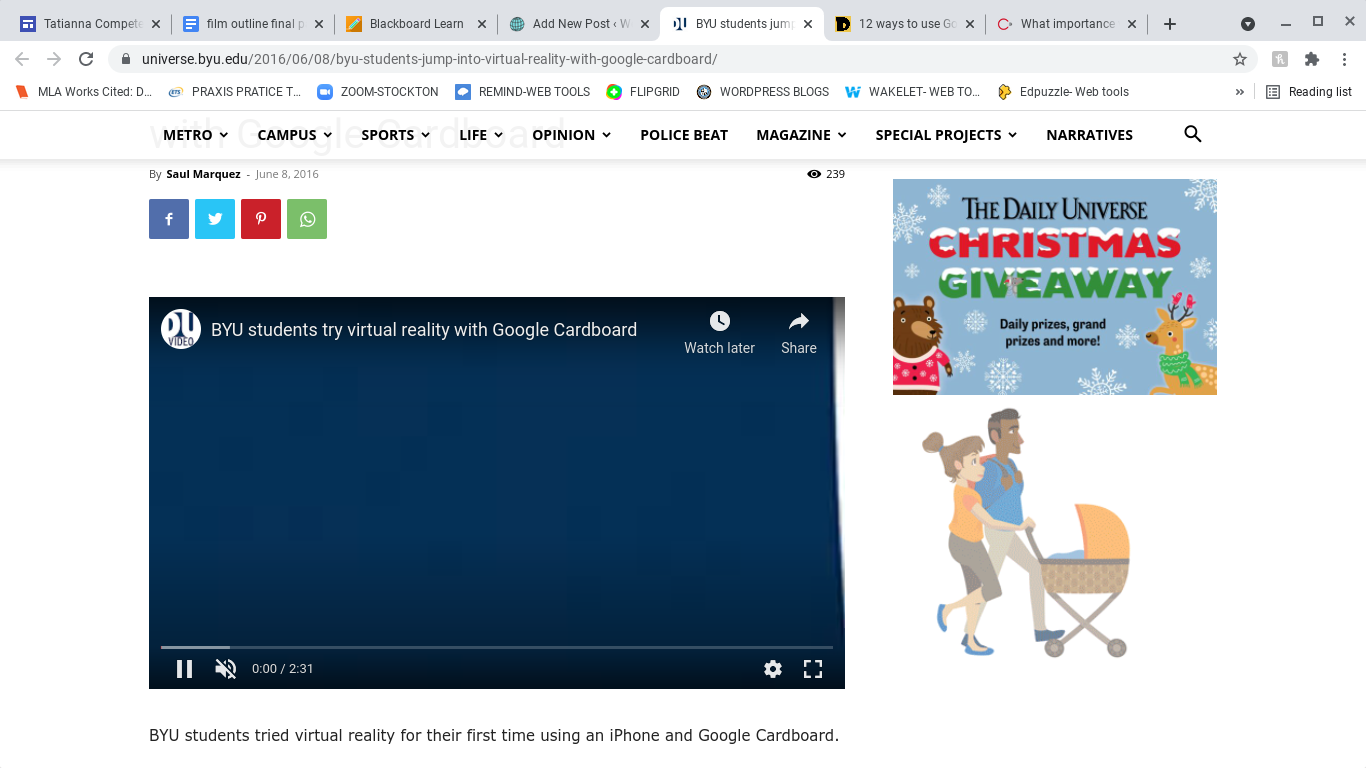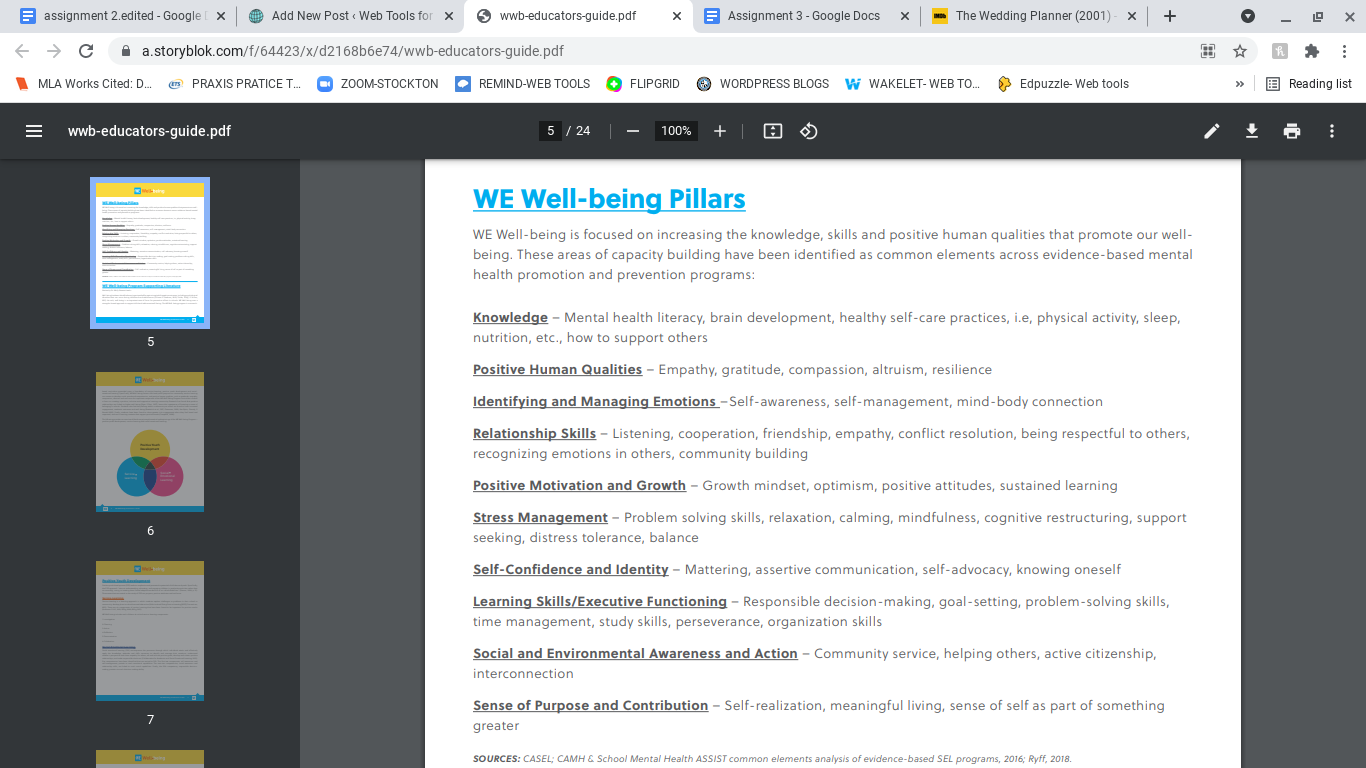Home » Posts tagged '#blogpost'
Tag Archives: #blogpost
Google Cardboard- Blog Post #10
By Tatianna Competello
For our blog post this week we had the choice of picking a learning tool that can be used for virtual reality in classrooms. The tool I decided to talk about is called Google Cardboard. You may be wondering what this app is and how it works. This is an app where you can try virtual reality right from your phone, using Google Cardboard. This virtual reality headset is built from basic cardboard or plastic that brings the viewer in a video or gives them a 360-degree view of an image. It makes the viewer feel like they are actually in that location when in reality they are in the comfort of their own home or classroom. You can view pictures, play games, and experience virtual reality through a VR viewer that you can buy or make at home. This is a great and fun lesson to teach your students especially if you are teaching virtually. I added a video below explaining what exactly Google Cardboard is and how to use it in class. I think this is an interesting video and explains everything you need to know about this app perfectly. You can click here to watch it.
The first step to using this learning tool is to go to your app store and download the app.

When it comes to teaching students of any age reality can always be a challenge. One of the biggest problems being you are not face to face with the students and this can be make learning difficult. I think any app that will allow students to learn something new and be creative is the best lesson a teacher can teach. With Google Cardboard students develop creative skills and be in charge of their own learning. With this app you can teach students how to use virtual reality technology can be used to engage students in topics related to geography, history, or literature by offering a deeply immersive sense of place and time. For example, you can take the students on a virtual field trip and how the students watch the trip the whole time through the google cardboard they created with their phone. I found a very detailed and interesting link that examples several ways how virtual reality with google cardboard can be used together in a classroom. This link truly shows you so many reasons why you should use this app for teaching and learning. You can click here to find it.

Now you may be wondering what are some specific ways the teachers and students can use this in the classroom. To start, you can take the students on virtual field trips. With this, students can choose a place they would like to go to, based on the current area they are in during the class time. The students could all go to the same place if they want or different places, that part does not really matter. The students can look at this location through their google cardboard and then share with the class what they learned from this lesson as well as what this site looked like through the cardboard.

Another way the students can use this app in class is by watching 360- degree videos. There are hundreds of videos the students can watch and on almost any topic the students want to watch the videos on. Such as skydiving, sharks swimming or taking the children on a tour of a museum with history made in it. When it comes to teaching a specific lesson in class you can find a video of the topic you are teaching and have the students watch this video in class.

A very creative way students can use google cardboard in the classroom would be to let the students create their own projects or lesson plans. This can help students can a real idea of how to use this app and all the features that come with it. The best part about this assignment is that the students can make their own 3-D pictures and then share with the class their picture is and why they chose it. This also helps to improve students’ creativity skills. You can click here to see twelve fun ways the students can use this app in the class with specific details for each assignment.
You can watch this video below with students using Google Cardboard for the first time as well as their reactions. I thought this video fit perfectly for this assignment. You can click here to watch it.

The last part of this discussion is to talk about how google cardboard can contribute to a successful global collaboration. According to the website creware.asia it states how “Virtual Reality creates an artificial environment with software. The artificial environment gets presented to the audiences in a way that encourages them to accept and believe it as a real environment. VR technology creates primary experience focusing on two senses, i.e., vision and sound.” One of the best traits that make google cardboard so successful is that students can go on virtual field trips around the world, and be able to see all these places just with their computer at home. The students do not actually have to go to these places physically. When it comes to global collaborations, as a teacher you can have your students interact with other students around the world by going on skype or zoom, and the students could even work on similar assignemts together. A great assignment would be to create a google classroom and then have the students come up with a lesson plan on how to use and create google cardboard and then show other students around the world how to use this, and share that experience together.
Blog Post 9- Tatianna Competello
This week for our blog post we are choosing a topic that we feel is most important to use in our classroom one day as future teachers. The area that I feel is most important in the classroom is “Well-Being Pillars”. This area can be found on page five of the educator’s guide. These rules focus on increasing the knowledge, skills, and positive human qualities that promote our wellbeing in the classroom. I think the reason why I like these well-being pillars is that they remind me of great classroom management rules along with areas that form a classroom. Students of all ages should be reminded and taught what every area means and how to use them in the classroom throughout the year of teaching. Below is a picture of what the well-being pillars are and what each area means.

The first area listed in the photo is Knowledge. In my future classroom, I want all my students to have as much knowledge as possible when it comes to every lesson taught in the classroom. This is going to be the base of the classroom. A good way for the students to distribute knowledge is to complete worksheets and assignments based off of what we are learning in class. Another way for the students to show knowledge to each other in the classroom is to work together as partners for activities.
The second area listed is, Positive Human Qualities. A way to show this in a classroom as a teacher would be a role model for the students. This way the students have someone to look up to and follow their actions at all times. Most likely when a teacher goes about something in a positive way the students will follow that and for the most part, all the students will be nice and caring to each other, especially when needed.
The third area is Identifying and Managing Emotions. A great way I can show this in the classroom is to be patient with the students. Some days are going to be more difficult than others but it always helps to let the students know you are there for them and it is okay to show how they are feeling throughout the day. For example, every morning when the students come to class I can ask everyone how they are feeling today and what emotions they are feeling, and then go from there.
The fourth area is Relationship Skills. This plays a huge factor in the classroom. In order for the students to show this in the classroom, the teacher should work on listening skills with the students. This way the students can comprehend what they are learning or what tasks they need to follow. Another skill to play in this area is for the students to create friendships in the classroom, and be respectful to others at the same time. This way the students can get to know each other and actually like working with each other, along with creating friendships that will last outside the classroom. When it comes to relationship skills it is all about community building and just showing everyone around you that you could be a nice person.
The fifth area is Positive Motivation and Growth. When it comes to this area as a teacher it is very important to instill confidence into your students at all times. The students usually thrive off of positive energy in the classroom and especially when the students know they are on the right track. This gives the students the motivation they need to keep going.
The sixth area is Stress Management. We all know that throughout the day or even towards the end of the week the students can be really stressed and overwhelmed with all the information they have been learning. A good way for the students to destress before they become completely overwhelmed is to take one day a week off and let the students have a free day. For example, every Friday as a teacher you could set up corners in the classroom the students can play games and activities with each other to have a little fun, but the best part about it is that the games will be educational. But the students might not catch onto this since they are having fun with each other.
The seventh area is Self-Confidence and Identity. For this area, it is important to know for the students to know that they can make mistakes and it is okay to fail every once in a while. Although that might sound bad it is not. Sometimes the students need to learn from their mistakes. But as a teacher, you should be there for your student letting them know it is okay and they will still be able to succeed and learn. It is also okay to show your students that not everyone is perfect and even the teacher themselves will make mistakes.
The eighth area is Learning Skills/Executive Functioning. This area is important when it comes to making responsible decisions, goal settings, problem-solving skills, and time management. A great way to show this in the classroom would be to come up with a list of goals for the students to complete every week as a group and as an individual. This way the students can learn what it is like to set a goal and complete it, along with working with time management skills. This way the students can also learn what it is like to work with a deadline and the responsibilities that come with it. These are not only skills that students will use in the classroom but skills that are used in everyday life.
The ninth area is Social and Environmental Awareness and Action. This is an area that can be used in the classroom but mostly outside the classroom. This area teaches the students what it is like to help others when it comes to community service. A good way to show the students how to practice this skill would be to have the students participate in a local can drive through the school or donate to a food pantry.
The last area is Sense of Purpose and Contribution. In this area, the students explore who they are and build a strong sense of purpose. A good way to use this in the classroom would be to ask the students for feedback at all times and let the students know that they can have a voice and speak up in the classroom whenever they like. For example, the students should not be uncomfortable asking questions in the classroom if they do not understand a topic. This can help the students expand their knowledge.
Recent Comments